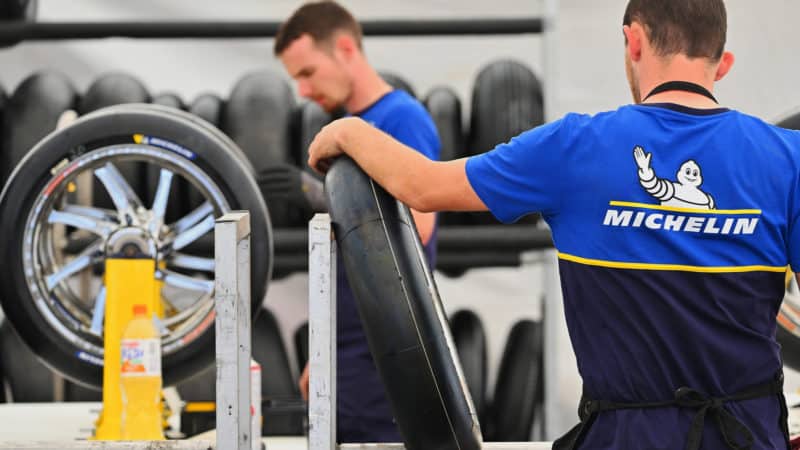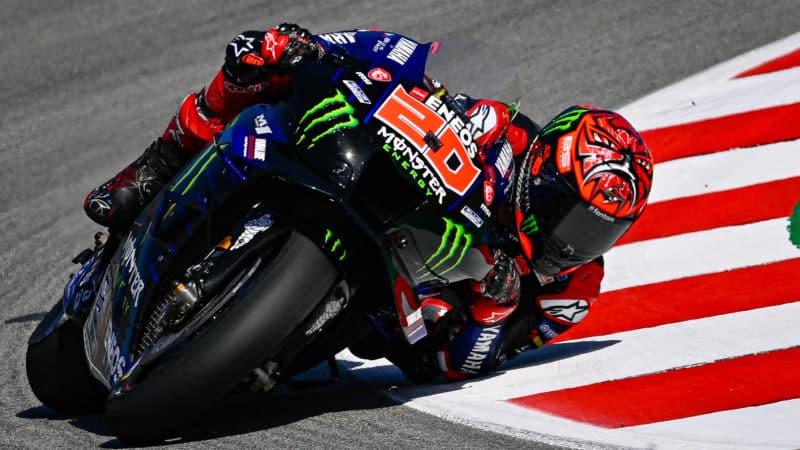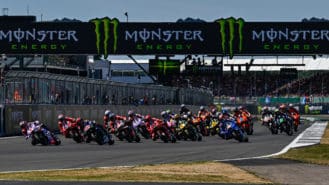The French company’s inhouse test riders are already evaluating the new slick and, if they give the go-ahead, the tyre will be tried by MotoGP factory test riders – Aprilia’s Lorenzo Savadori, Ducati’s Michele Pirro, Honda’s Stefan Bradl and so on – during October, while the MotoGP paddock is busy racing in the Far East.
If the test riders give the thumbs up, the MotoGP grid will get the chance to try the tyre in the one-day post-season tests at Valencia on November 8.
The concept of the new tyre is to make it less susceptible to increases in temperature and pressure, which is the problem with the current tyre: when a rider catches a rival and gets close to the machine in front then his front tyre overheats and loses grip, so he can’t attack. This is why MotoGP races are often more of procession than a battle. The tyre will also run at lower pressure than the current 1.9 bar minimum, for better performance.
“The goal is 1.7 bar and to make the tyre less sensitive to temperature and pressure changes,” said Michelin motor sport manager Piero Taramasso at Red Bull Ring. “The tyre will be very different, with a new profile and it will be made with different materials.”

Michelin’s current front slick is five years old and wasn’t designed to cope with lots of downforce aero
Michelin
Although Michelin has been criticised for its current front slick’s performance in recent years, as the extra loads imposed by the latest technology have overwhelmed the tyre, Taramasso sees the issue from a different point of view.
“When you have a control-tyre championship, then the manufacturers have to design their motorcycles around the tyres,” added Taramasso. “But by adding all the aero and the devices, then they aren’t designing their motorcycles around the tyres.”
This is a fair point. Many riders and manufacturers complain that the Michelin front isn’t up to the machinery, but perhaps that’s because the manufacturers have worked against the tyres, not with the tyres.
Michelin doesn’t know when the new front will be ready to race, but it certainly won’t be next year, because front tyres take a lot longer to get right than rear tyres, because they’re so much more critical in every way.



